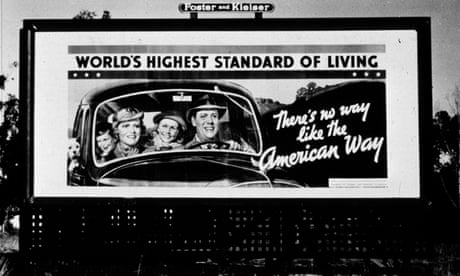- by foxnews
- 03 Apr 2025
US workers deserve a break. It’s time for a 32-hour working week | Bernie Sanders
US workers deserve a break. It’s time for a 32-hour working week | Bernie Sanders
- by theguardian
- 08 May 2023
- in politics

In 1938, as a result of a massive grassroots effort by the trade union movement, the Fair Labor Standards Act was enacted by Congress to reduce the work week to 40 hours. Back then, the American people were sick and tired of working 80, 90, 100 hours a week with very little time for rest, relaxation or quality time with their families. They demanded change and they won a huge victory. That's the good news.
The bad news is that despite an explosion in technology, major increases in worker productivity, and transformational changes in the workplace and American society, the Fair Labor Standards Act has not been reformed in 80 years. The result: millions of Americans are working longer hours for lower wages, with the average worker making nearly $50 a week less than he or she did 50 years ago, after adjusting for inflation. Further, family life is suffering, as parents don't have adequate time for their kids, life expectancy for working people is in decline, and increased stress is a major factor in the mental health crisis we are now experiencing.
Compared with other countries, our workplace record is not good. In 2021, American employees worked 184 more hours than Japanese workers, 294 more hours than British workers, and 442 more hours than German workers. Unbelievably, in 2023 there are millions of Americans who work at jobs with no vacation time.
It's time to reduce the work week to 32 hours with no loss in pay. It's time to reduce the stress level in our country and allow Americans to enjoy a better quality of life. It's time to make sure that working people benefit from rapidly increasing technology, not just large corporations that are already doing phenomenally well.
Think about all of the extraordinary changes that have taken place in the workplace over the past several decades. When I was elected mayor of Burlington, Vermont, in 1981, there were no computers in city hall. There were no chatboxes, no printers, no emails, no calculators, no cellphones, no conference calling or Zoom.
In factories and warehouses, robots and sophisticated machinery did not exist or were only used in primitive forms.
In grocery stores and shops of all kinds, there were no checkout counters that utilized bar codes.
As a result of the extraordinary technological transformation that we have seen in recent years, American workers are now 480% more productive than they were in the 1940s.
In addition, there are far more workers today. In the 1940s, less than 65% of Americans between 25 and 54 were in the workforce. Today, with most families requiring two breadwinners to pay the bills, that number is over 83%.
Yet despite all of these incredible gains in productivity, over 40% of US employees now work more than 45 hours per week; 12% work more than 60 hours a week; and the average worker now works 43 hours per week. Many are on their computers or answering emails seven days a week.
Moving to a 32-hour work week with no loss of pay is not a radical idea. In fact, movement in that direction is already taking place in other developed countries. France, the seventh-largest economy in the world, has a 35-hour work week and is considering reducing it to 32. The work week in Norway and Denmark is about 37 hours.
Recently, the United Kingdom conducted a four-day pilot program of 3,000 workers at over 60 companies. Not surprisingly, it showed that happy workers were more productive. The pilot was so successful that 92% of the companies that participated decided to maintain a four-day week, because of the benefits to both employers and employees.
Another pilot of nearly 1,000 workers at 33 companies in seven countries found that revenue increased by more than 37% in the companies that participated and 97% of workers were happy with the four-day workweek.
Studies have shown that despite working fewer hours, workers are either more, or just as, productive during a four-day work week. One study found that worker productivity increased 55% after companies implemented a four-day week. A trial of four-day work weeks for public-sector workers in Iceland found that productivity remained the same or improved across the majority of workplaces. In 2019, Microsoft tested a four-day work week in Japan and reported a 40% increase in productivity.
In addition, 57% of workers in companies that have moved to a four-day work week have indicated that they are less likely to quit their jobs.
Moreover, at a time when so many of our people are struggling with their mental health, 71% of workers in companies that have moved to a four-day work week report feeling less burnout, 39% reported feeling less stress and 46% reported feeling less fatigued.
As much as technology and worker productivity has exploded in recent years, there is no debate that new breakthroughs in artificial intelligence and robotics will only accelerate the transformation of our economy. That transformation should benefit all, not just the few. It should create more time for friends and family, more time for rest and relaxation, more time for all of us to develop our human potential.
Eighty-three years after President Franklin Delano Roosevelt signed a 40-hour work week into law, it's time for us to move to a 32-hour work week at no loss of pay.
- by foxnews
- descember 09, 2016
Flight passenger says man deliberately squatted in window seat, ignites social media debate
An airline flyer said a seat squatter tried to tell her to swap seats with him, but she stood her ground, prompting a social media debate. A travel expert weighs in.
read more





